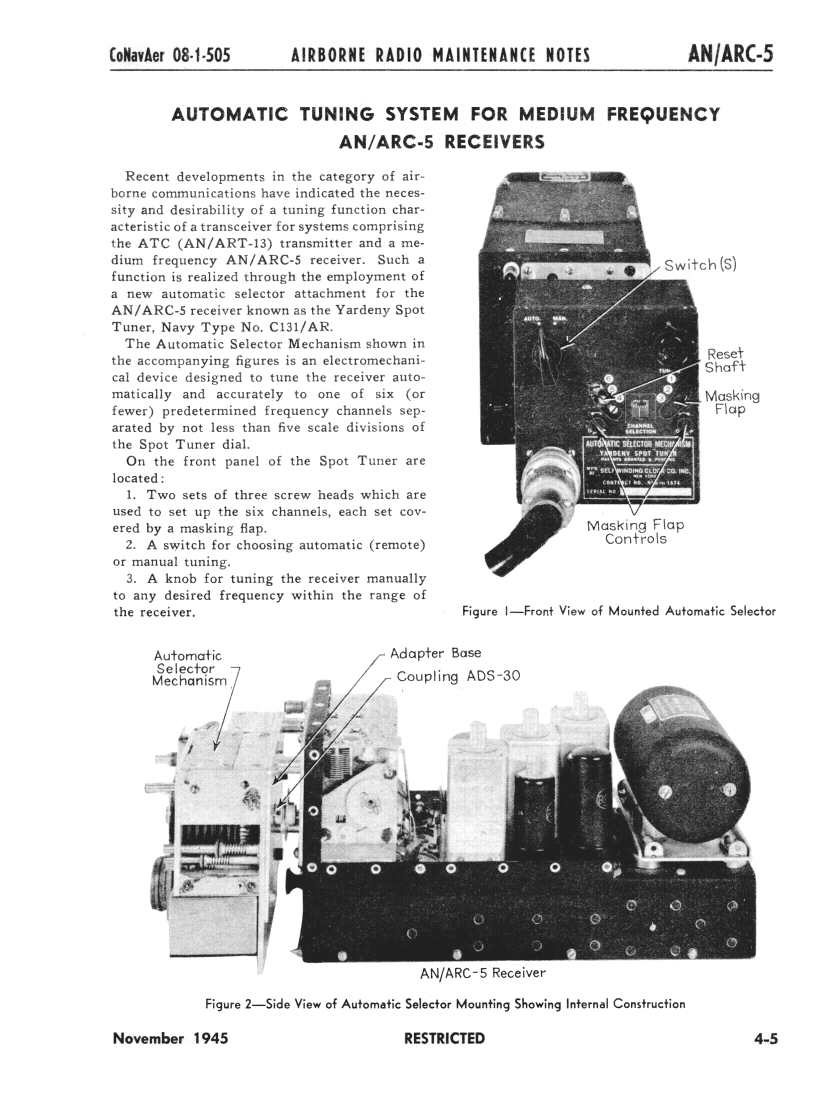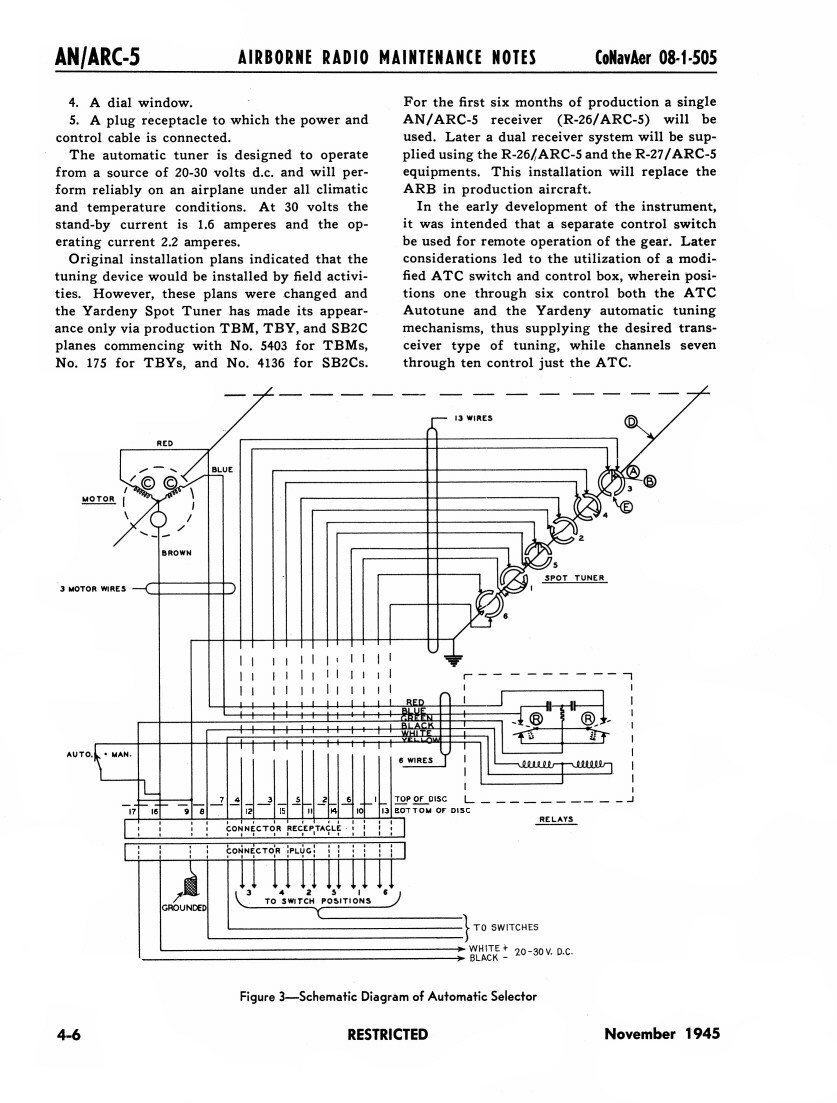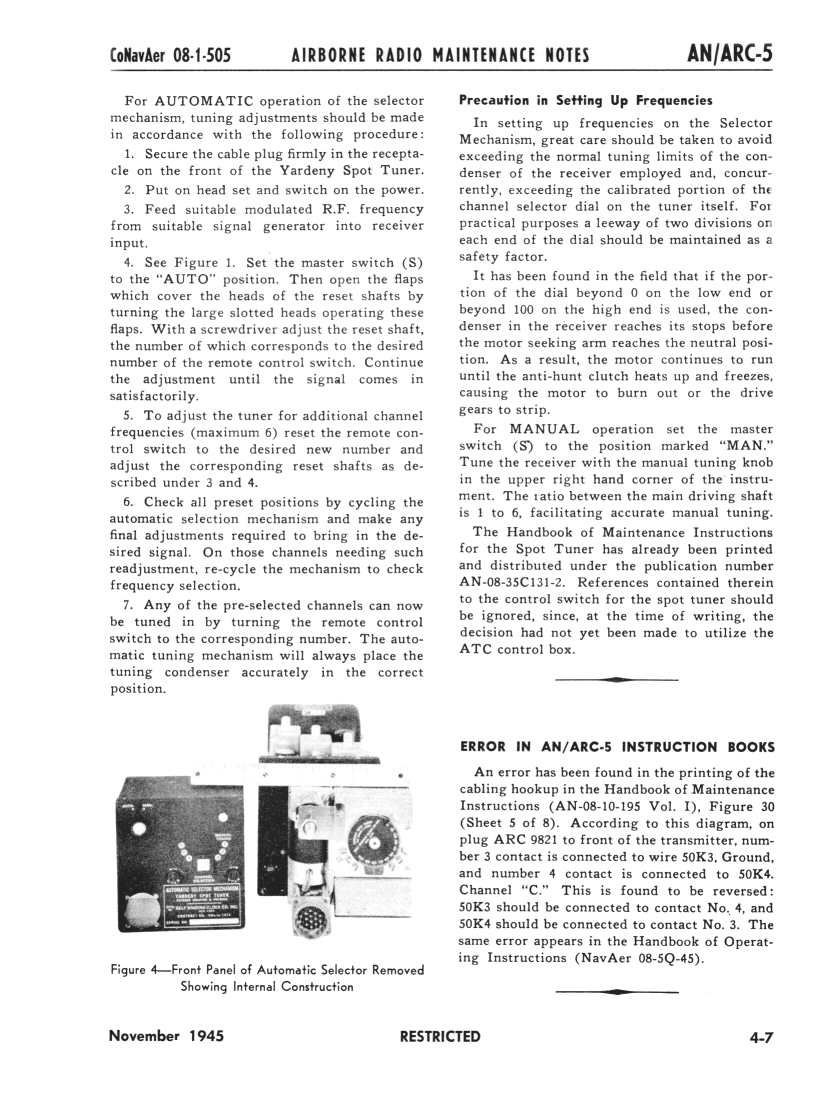The late war period was marked by the introduction of peripheral components to assist the aircrew in radio communications. The gradual move to pre-set channels for any given mission also forced a need to simultaneously tune both transmitter and receiver to several different HF frequencies (expressed in channel numbers). With the Collins AN/ART-13 (and its predecessor, the ATC) finally getting into fleet aircraft in sufficient numbers - even in smaller combat aircraft with two and three crewmen, the Naval Research Laboratory was forced to look at quickly fielded alternatives to the relatively expensive (and heavy) autotune Collins AN/ARR-15 receiver that accomplished the same goal. The choice of a lightweight receiver was easy - the R-26/ARC-5 and R-27/ARC-5 (and the ARA equivalents) were available in abundance...but the question was how to automate its tuning quickly and easily, and match it to the autotune channels of an AN/ART-13 transmitter.
The answer was in an invention evaluated by the Naval Research Lab in January of 1941 - the Yardeny Remote Control System, invented by an engineer named Michel N. Yardeny (U.S. Patent number 2403161A.) Its debut was somewhat inauspicious - the abstract of the 20 page report stated:
Fast forward to 1944 - in the interim the bugs had been worked out and a nomenclatured tuner adapted to the ARA and AN/ARC-5 receivers, the C-131/AR. The installation/maintenance manual (AN 08-35C131-2, dated 15 June 1944) is located here. You may be surprised at the number of steps it takes to install the mod kit on a normal ARA or AN/ARC-5 receiver, but the manual is clear and well illustrated. However, it's definitely not a Lego set...
By late 1945 at least three different manufacturers had been licensed to make different products based on the patent. Below is a page from the November 1945 issue of "Electronics" magazine, showcasing some of the Yardeny applications. The Self Winding Clock Company made all the C-131/AR examples that I have seen.
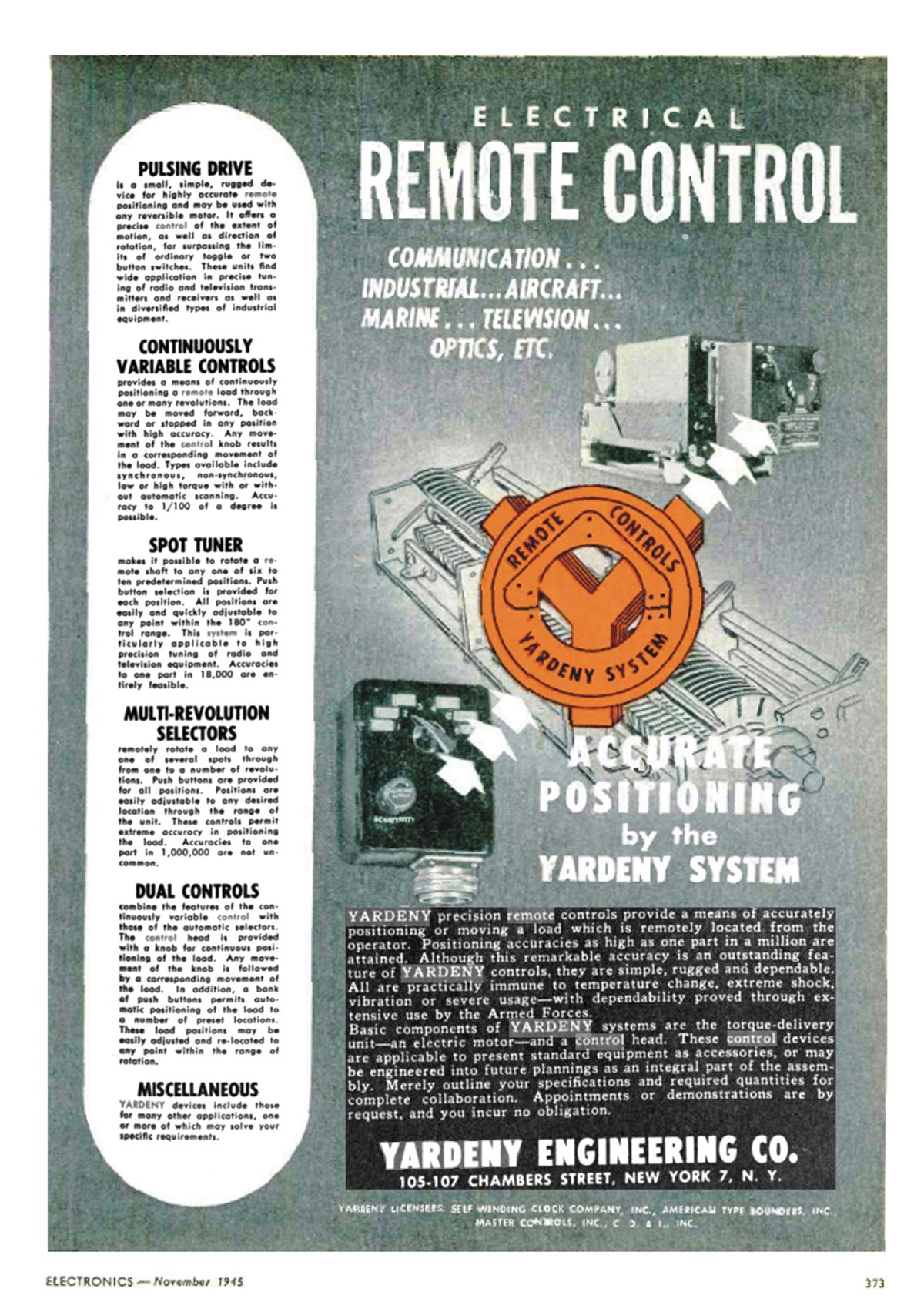
The control boxes for this set went through a series of variations, beginning with simply supplying a six position double pole rotary switch with the selector mechanism. Mounting it somewhere convenient for the operator was left up to the installer.
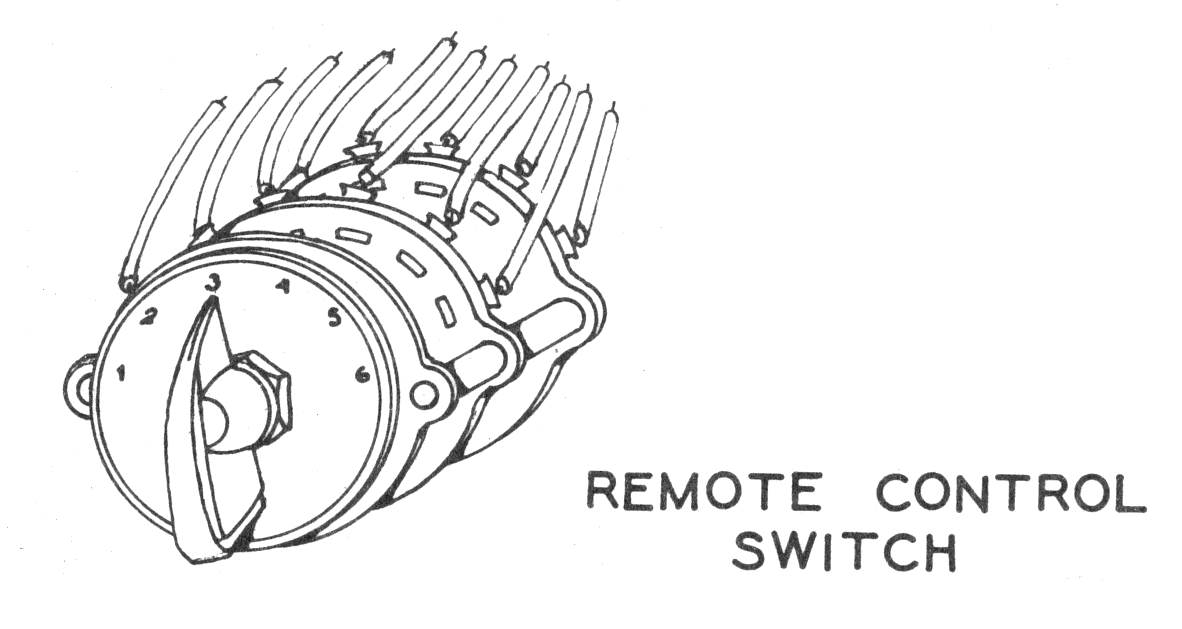
A cleaned up version of this simple six position switch was also provided as an option by Yardeny, visible in the advertisement above with an added "sensitivity" control", but its functionality was restricted to the six channels of the receiver, lopping off the other four channels the AN/ART-13 was capable of providing. As a result, field personnel apparently whipped up another version made from a blank ART-13 control box, shown here installed in a Navy TBM-1C aircraft:
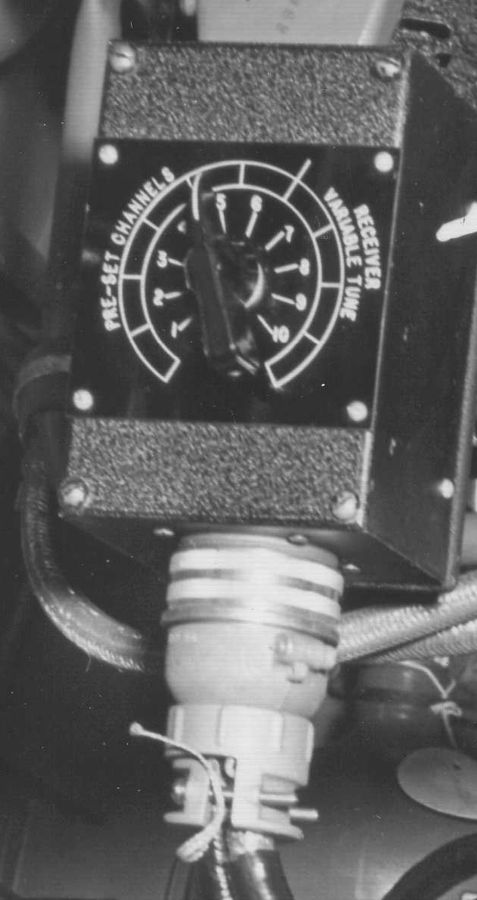
Two more boxes followed in turn (now properly nomenclatured and having the usual white painted rectangles to insert frequencies with a pencil), including one that was designed go into the emerging 6" wide "mini-rack" movement for reduction of cockpit control box clutter.
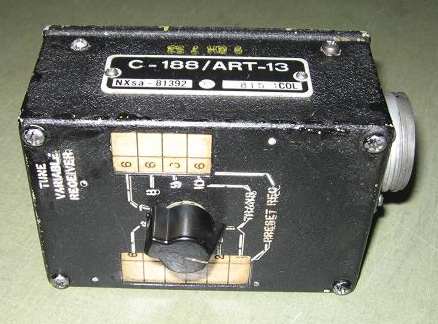
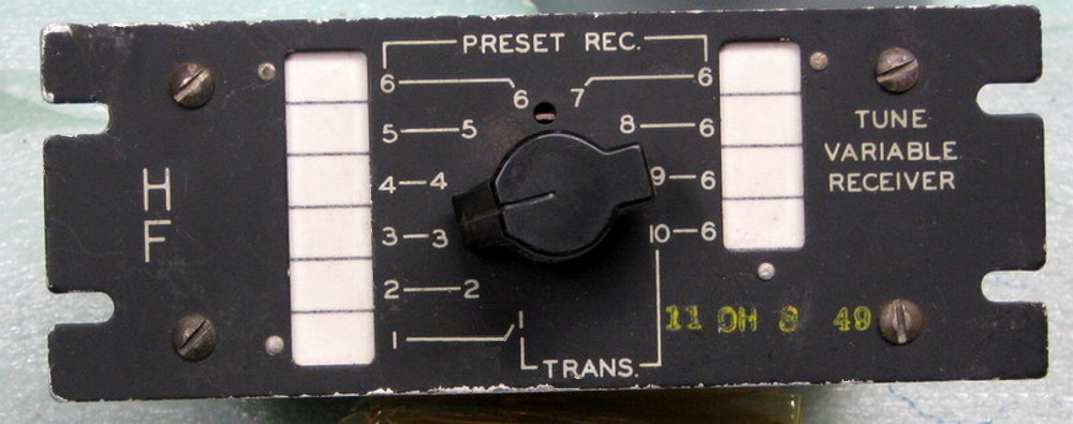
Finally, here is an overview of the set printed in the November 1945 issue of Airborne Radio Maintenance Notes (ARMN), presumably to share information on the set to techs who were not acquainted with it. Despite the normally careful redaction of an original designer's name or company from official references, Yardeny's personal name appears for perhaps the last time in a Navy pub.
